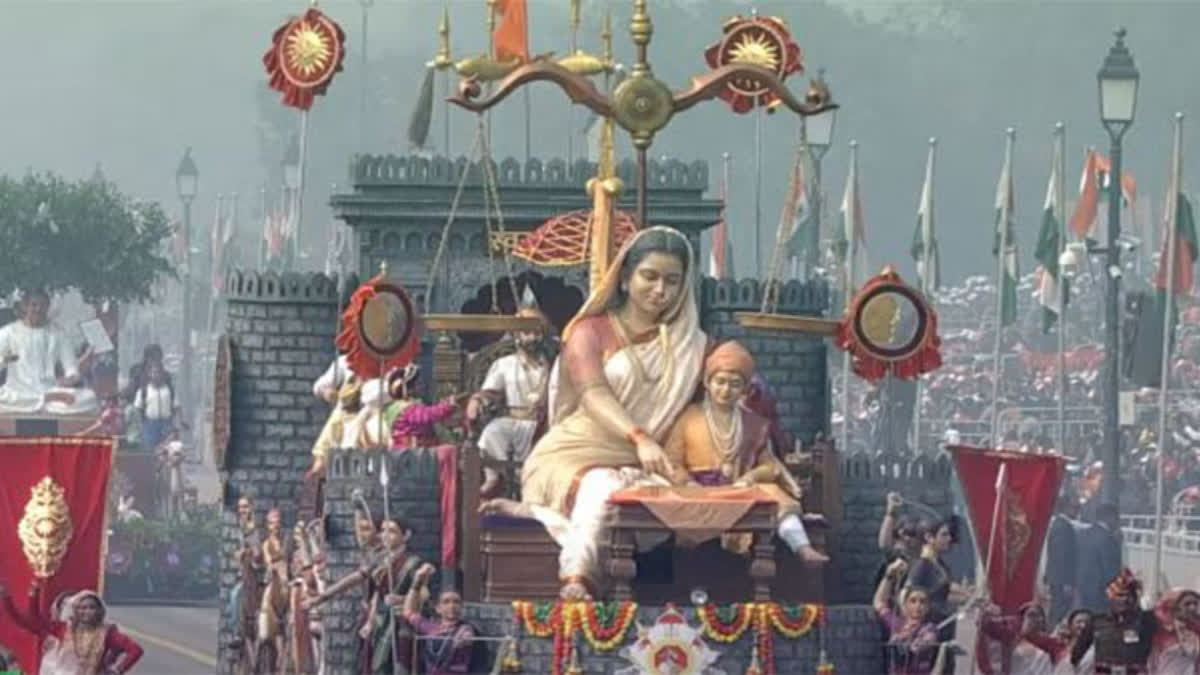New Delhi: The Maharashtra tableau this year is based on the 350-coronation-year celebrations of Chhatrapati Shivaji Maharaj under the aegis of Rajmata Jijau and inspired by her thoughts, the dream of Hindu 'Swarajya' became a reality.
Chhatrapati Shivaji Maharaj established independent 'Swarajya' with the participation of ryots. The work and thoughts of Chhatrapati Shivaji Maharaj in establishing the 'Swarajya' are an inspiration for all Indians and its attributes of equality, justice, respect for women, taxation system with a human face, interfaith harmony and environmental considerations are instituted in the Constitution. Chhatrapati Shivaji Maharaj's fight was mainly against injustice and exploitation.
In the tractor section of the tableau, Rajmata Jijau is seen teaching child Shivaji the lessons of politics, equality, justice, and equanimity. Behind them are scales representing justice. At the centre of the tableau is a depiction of Ashtapradhan Mandal Darbar where some women are raising their questions in this court.
On the back end of the tableau are a replica of Chhatrapati Shivaji Maharaj, the Rajmata and other courtiers along with the forts and royal seal in the background. The trailer affront shows the edict of the Maharaja, as well as royal insignia.
Earlier, President Droupadi Murmu launched the celebrations of the 75th Republic Day on Friday by unfurling the National Flag at Kartavya Path. President Murmu on her arrival was received by Prime Minister Narendra Modi.
Simultaneously, the National Anthem was played and the 21 Gun Salute was presented to the President. President Murmu and her French counterpart Emmanuel Macron, who is the chief guest at this year's Republic Day celebration were escorted by the President's Bodyguard- 'Rashtrapati Ke Angrakshak'.
The President's Bodyguard is the seniormost Regiment of the Indian Army. This Republic Day is special for this elite Regiment as the 'Angrakshak' has completed 250 years of service since its raising in 1773. The two Presidents arrived at Kartavya Path in the 'Traditional Buggy', a practice which made a comeback after a gap of 40 years.
Read More



